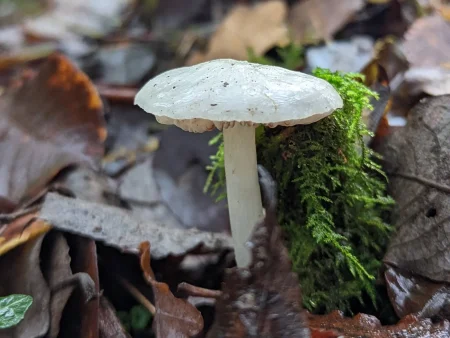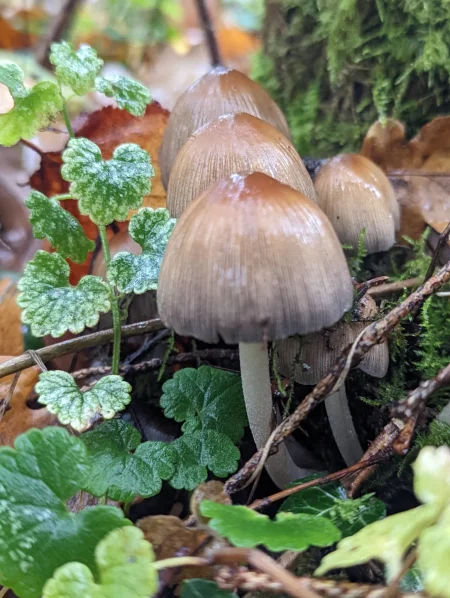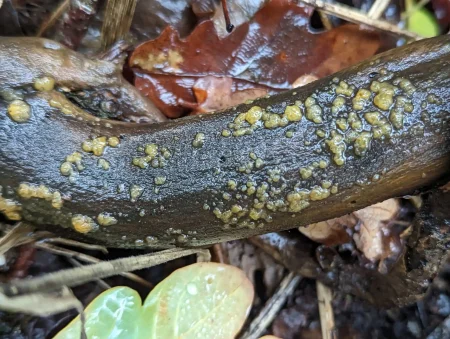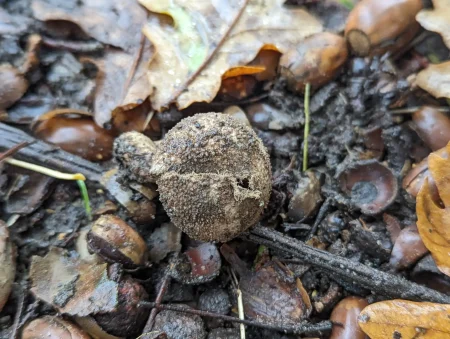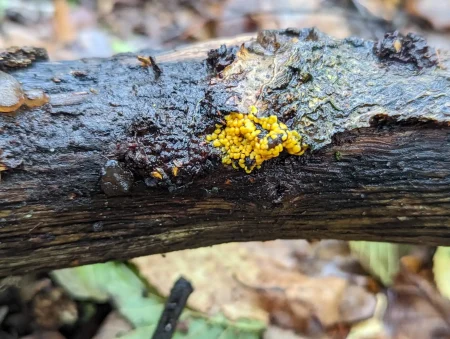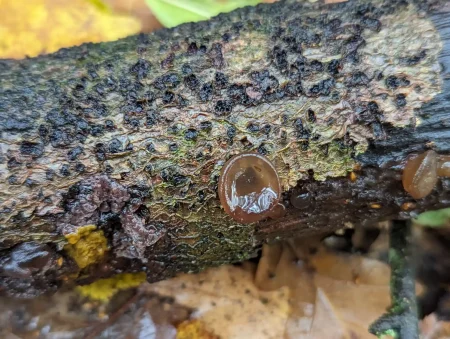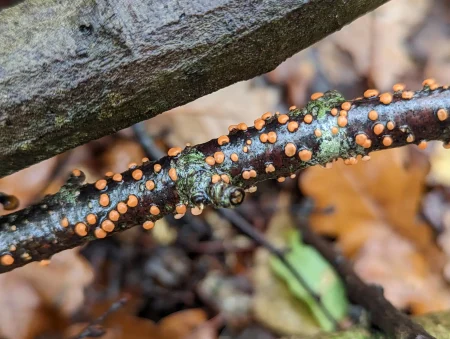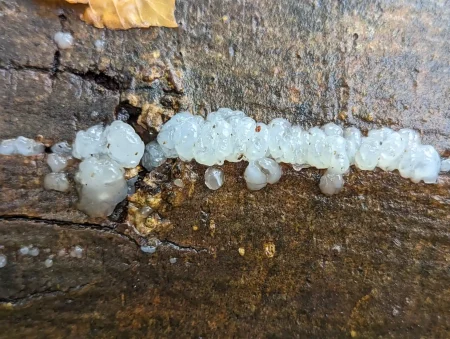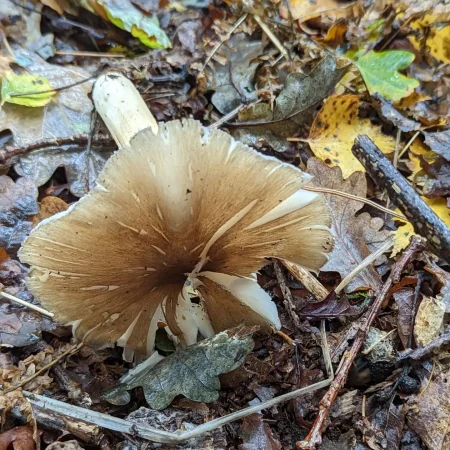Today the weather was drizzly and wet; the air was cool and still.
CAR PARK
At the main car park, the immature Coprinopsis atramentaria fungi from week nine were now fully grown and could be identified for sure.
ENTRANCE AREA
Entering the reserve, on the woodland trail I found a singular white fungus — possibly Hygrophorus eburneus (Fig. 10.0) and a cluster of largish Coprinopsis micaceus (Fig. 10.1).
BASECAMP AREA
On path to Basecamp, I saw the remains of the Laccaria laccata troop.
At Basecamp, on an upturned log I found a group of white brackets (Fig. 10.2).
On a large log, I saw a couple of tall Parasola conopilea, groups of Lachnum virgineum on the logs’ cut end grain (Fig. 10.3) and Daldinia concentrica (Fig. 10.4).
Phlebia tremellosa
Basecamp
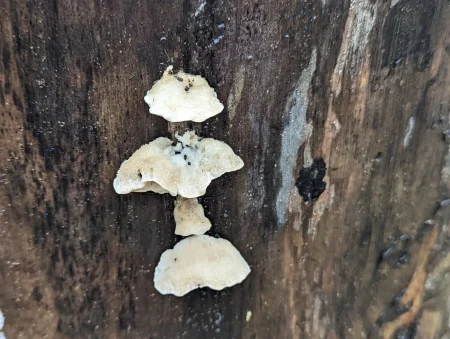
Figure 10.
Lachnum virgineum
Basecamp
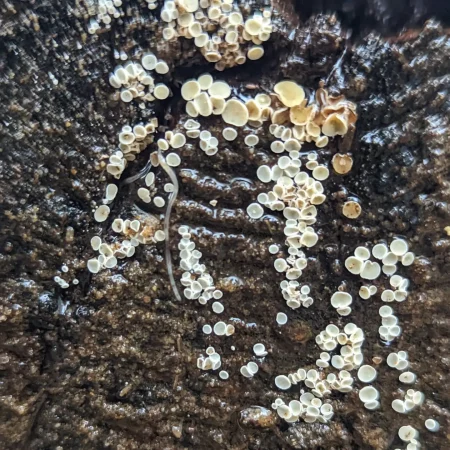
Figure 10.
Daldinia concentrica
Basecamp
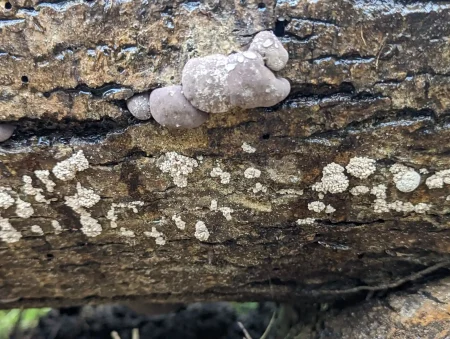
Figure 10.
On the Basecamp railway path, I saw the Mycena and the Stereum hirsutum from previous weeks.
I found a stick with lots of moist yellow jelly fungi — most likely Dacrymyces stillatus (Fig. 10.5)
THE DELL
On an upturned log, I found a small Dictydiaethalium plumbeum (Fig. 10.6) and the later grey forms of the Dictydiaethalium plumbeum found on Day Nine.
In The Dell I saw more Mucilago crustacea (Fig. 10.7), the Phleogena faginea on upturned logs and a funnel shaped Lactarius tabidus (Fig. 10.8).
Dictydiaethalium plumbeum
The Dell
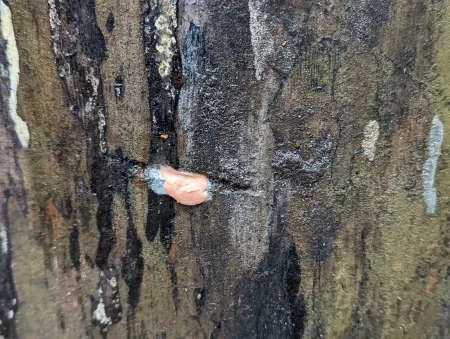
Figure 10.
Mucilago crustacea
The Dell
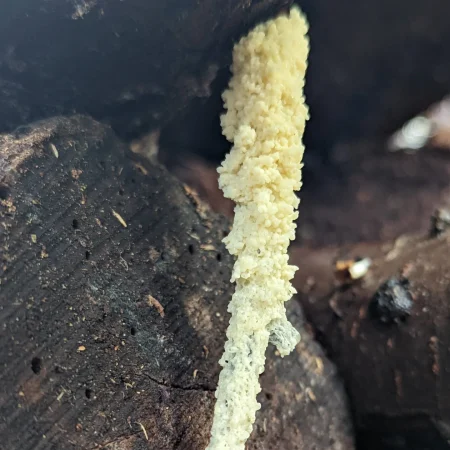
Figure 10.
Lactarius tabidus
The Dell
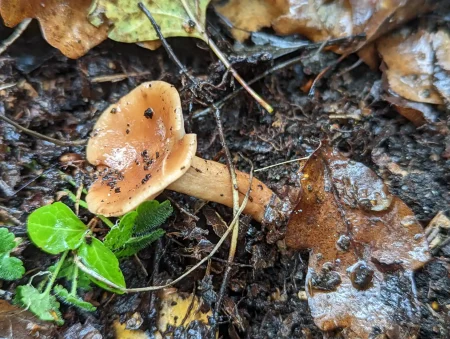
Figure 10.
DRAINAGE CHANNEL PATH AND ENCLOSED AREA
Just past the Gnarly Oak, I saw a dirtied Lycoperdon perlatum (Fig. 10.9).
The Bulgaria inquinans remained on the sculpted log along the path and in the Enclosed Area were the usual fungi: Clavulina coralloides, Leotia lubrica, Picipes badius and Typhula juncea.
YEW GROVE AREA
I also spotted a yellow slime mould — possibly a Trichia species (Fig. 10.10).
Further along the trail, I spotted more Lachnum virgineum, Coprinellus disseminatus and juvenile Auricularia auricula (Fig. 10.11).
OUTPOST AREA
In the woodland adjacent The Outpost, I spotted Nectria cinnabarina (Fig. 10.12) and a Phallus impudicus.
TRAIL END AREA
Towards the end of the woodland path, I found a cluster of white, translucent jelly fungi — possibly Exidia nucleata (Fig. 10.13)
I also saw a large brown fungus (Fig. 10.14).
I also Parasola conopilea around the Fen.
